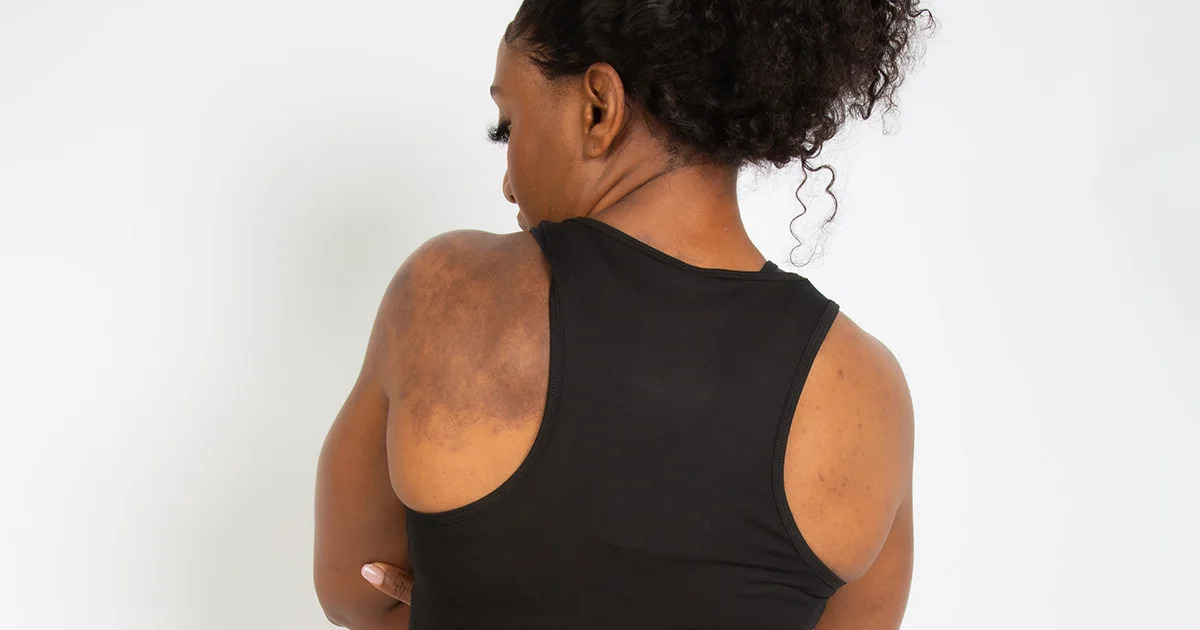Here's what we'll cover
Here's what we'll cover
Different people have different definitions of a healthy body and body weight. Some view the scale as the ultimate measure of fitness, while others prefer to slide it under the counter and focus on how they feel.
Healthcare providers often use body mass index (BMI) as a simple way to measure the relationship between a person’s weight and height. The BMI scale is divided into the categories underweight, normal (or healthy) weight, overweight, obese, and extremely obese. That said, BMI is an imperfect measurement because it doesn’t consider whether weight comes from fat or muscle. For example, a bodybuilder may have a very high BMI even if the amount of fat they have is very low. Because of this, some experts turn to body composition instead of using BMI.
What is body composition?
Body composition is considered one of the more comprehensive and informative measures of overall health since it examines both fat mass and non-fat mass.
Fat mass constitutes both types of fat tissue in the body: subcutaneous fat and visceral fat. Subcutaneous fat is the fat under the skin all around the body and is what most people think of when they talk about losing weight. Based on genetics and lifestyle factors, a bit of subcutaneous fat is normal, but too much can put a person at high risk for health problems. Visceral fat is the fat inside the abdominal cavity in the spaces surrounding the liver, intestines, and other organs.
Non-fat mass encompasses pretty much everything else—your body’s muscles, organs, bones, and fluid. When referring to body composition, it primarily relates to muscle mass.
How can you determine your body composition?
A healthy body composition includes a lower percentage of body fat and a higher percentage of non-fat mass. A healthy body composition lowers your risk of health issues such as obesity, type 2 diabetes, cancer, and heart disease (American Heart Association, n.d.).
Although this computation may not be visible to the naked eye, several methods can determine body composition.
Bioelectrical impedance analysis (BIA)
BIA is a non-invasive and cost-effective method of body composition analysis. In particular, it measures body fat and muscle mass. Compared with BMI, skinfold measurements, and other techniques for determining body composition, it’s considered one of the more precise and reliable predictors of lean or fat mass in people (Khalil, 2014).
So how exactly does it work? Usually, the patient will have electrodes placed on their right hand and foot, which allow a low-level electrical current to pass through the body. The flow of the current is affected by water, and the BIA determines the resistance to the flow of the current as it passes through the body.
There are various home devices that are used to monitor body fat. For example, Fitbit Aria measures weight, BMI, and body fat percentage, while the Omron HBF-400 model displays body fat percentage, BMI, skeletal muscle, resting metabolism, visceral fat, body age, and weight—with the goal of tracking accurate body composition.
Although these home devices are a convenient and affordable method for measuring BIA, they’re not always as accurate as those used in clinical settings. They may overestimate or underestimate body fat percentage depending on the device and person (Carrion, 2019).
Skinfold measurements
The skinfold method is another popular body composition measurement method because it’s affordable, relatively reliable, and easy enough to incorporate into various health settings. Measurements are quick and simple to obtain in most age groups, including infants and young children.
One potential disadvantage of the skinfold method is that it assumes all people have a similar distribution of subcutaneous fat and visceral fat. We know that factors like age and gender can influence body composition, but the skinfold equations were developed to estimate the body fat of men and women across a wide range of ages (18–61 years) and degrees of body fatness (4–44% fat) (McRae, 2010).
According to researchers at the University of New Mexico, following a standardized approach like the one below is key to ensuring accuracy. Although a practical and straightforward method, visit your healthcare provider instead of trying this at home for the most accurate measurements. Here’s a recommended approach for accurate skinfold measurement (Kravitz, n.d.):
Take all skinfold measurements on the right side of the body.
Carefully identify and mark the skinfold sites.
Place the thumb and index finger approximately 3 inches (8 cm) perpendicular to the skinfold, following the natural cleavage lines of the skin.
Grasp the skinfold firmly with the thumb and index finger just slightly less than 1/2 inch (1 cm) above the marked site to be measured.
Do not release the skinfold during the measurement.
Place the jaws of the calipers approximately 1/2 inch below the thumb and index finger. Always release the caliper jaw pressure slowly.
Take the skinfold measurement 4 seconds after the pressure is released. Measure the skinfold to the nearest 1/2–1 mm.
Dual-energy X-ray absorptiometry (DEXA scan)
The DEXA scan is a technique that has been used for years to assess bone density to screen for osteoporosis. More recently, it’s been used for body composition as well. DEXA is a two-dimensional imaging practice that uses x-rays to estimate total and regional body fat percentage.
It’s also unique in its ability to account for three major components: fat mass, lean mass, and bone mineral mass. For this reason, it’s often used to help prevent cardiovascular and metabolic diseases, manage chronic diseases, and monitor the impact of treatment regimens on body tissues.
Hydrostatic weighing
Hydrostatic weighing is regarded as a classic measurement, or the gold standard, of body composition. Also known as hydrodensitometry or underwater weighing, this method aims to measure body density to calculate percentage body fat.
The actual setup sort of seems like an odd experiment. First, the person is weighed on dry land, then they are seated in a chair attached to a scale and lowered until fully submerged into a water tank. The final step is for the person to expel all the air from their lungs and remain motionless while the underwater weight is measured. Then repeat three times!
Although hydrostatic weighing is considered highly accurate, it’s also a stressful and expensive procedure. Unless you have access to research facilities like hospitals, colleges, or sports organizations, the average person won’t choose this method.
Other methods
Two other body composition measurements worth mentioning are:
Waist circumference
Air displacement method (BOD POD)
The first provides a simple measure of central fatness, which predicts negative health outcomes like heart disease and type 2 diabetes (Wells, 2006). The BOD POD is much more high-tech and is mainly used in clinical, athletic, and military settings to measure fat mass and lean muscle mass. Shaped like an egg, this computerized device measures weight and volume to determine body density and calculate body fat percentage.
What affects body composition?
The aging process is a natural part of life and yields somewhat predictable patterns for a decline in height, weight, and muscle mass. After age 30, both men and women tend to lose lean body mass, and their amount of body fat begins to increase (NIH, 2020).
The body weight trajectory varies between the sexes. Men will usually gain weight until age 55 then begin to lose weight, while women will gain weight for an additional 10 years before they start to lose weight at age 65 (NIH, 2020).
In addition to age and gender, family history and genetics can play a role in body composition and the amount of fat you carry. Your genetic makeup influences whether you’re naturally lean or have a tendency to retain excess fat.
How to change your body composition
Altering your body compositions boils down to the basic principles of diet, exercise, and other healthy habits—although the execution might be more complicated than you’d think.
Decrease calories—Mindful calorie consumption is a leading factor in altering your body composition. To break it down simply: Consistently eating more calories than your body burns will lead to weight gain, and consuming fewer will lead to weight loss. Also, try to focus on nutrient-dense foods and foods high in protein and fiber.
Exercise—One way to change your body composition is through physical activity. By decreasing body fat, increasing muscle, or both, you’re sure to hone your body composition and improve physical fitness. Loved by some and dreaded by many, cardio is one of the best ways to burn calories. For building muscle, strength training is key. An observational study of 348 young men and women found that over a period of one year, exercise increased lean mass in normal-fat participants and reduced fat mass in adults with excess fat (Drenowatz, 2015).
Improve sleep—A cross-sectional analysis suggests a link between sleep quality and body composition. Among a group of people aged 21–35 years with a BMI of 20–35 kg/m2, those with a higher percentage of body fat and a lower percentage of non-fat mass had lower sleep efficiency. Elevated BMI or body fat percent were also observed for later wake times, shorter sleep duration, and longer sleep latency. That said, the researchers were unable to prove if sleep affected body composition or if body composition affected sleep (Wirth, 2015).
DISCLAIMER
If you have any medical questions or concerns, please talk to your healthcare provider. The articles on Health Guide are underpinned by peer-reviewed research and information drawn from medical societies and governmental agencies. However, they are not a substitute for professional medical advice, diagnosis, or treatment.
American Heart Association (AHA). (n.d.) Body composition tests. Retrieved on July 30, 2020 from https://www.heart.org/HEARTORG/Encyclopedia/HeartEncyclopedia_UCM_445084_Encyclopedia.jsp?title=body%20composition%20tests
Carrion, B. M., Wells, A., Mayhew, J. L., & Koch, A. J. (2019). Concordance among bioelectrical impedance analysis measures of percent body fat in athletic young adults. International Journal of Exercise Science, 12(4), 324–331. Retrieved from https://www.ncbi.nlm.nih.gov/pmc/articles/PMC6355131/
Drenowatz, C. Hand, G. Sangner, M. Shook, R. (2015). The prospective association between different types of exercise and body composition. Medicine & science in sports & exercise. Volume 47 - Issue 12 - p 2535-2541 doi: 10.1249/MSS.0000000000000701. Retrieved from https://journals.lww.com/acsm-msse/Fulltext/2015/12000/The_Prospective_Association_between_Different.6.aspx
Khalil, S. F., Mohktar, M. S., & Ibrahim, F. (2014). The theory and fundamentals of bioimpedance analysis in clinical status monitoring and diagnosis of diseases. Sensors (Basel, Switzerland), 14(6), 10895–10928. doi: 10.3390/s140610895. Retrieved from https://www.ncbi.nlm.nih.gov/pmc/articles/PMC4118362/
Kravitz, L. Heyward, V.H. (n.d). Getting a grip on body composition. University of new mexico. Retrieved from http://unm.edu/~lkravitz/Article%20folder/underbodycomp.html
McRae M. P. (2010). Male and female differences in variability with estimating body fat composition using skinfold calipers. Journal of chiropractic medicine, 9(4), 157–161. doi: 10.1016/j.jcm.2010.07.002. Retrieved from https://www.ncbi.nlm.nih.gov/pmc/articles/PMC3206567/
U.S National Institutes of Health. (2020). Aging changes in body shape. Medline Plus. Retrieved from https://medlineplus.gov/ency/article/003998.htm
Wells, J. C., & Fewtrell, M. S. (2006). Measuring body composition. Archives of Disease in Childhood, 91(7), 612–617. doi: 10.1136/adc.2005.085522. Retrieved from https://www.ncbi.nlm.nih.gov/pmc/articles/PMC2082845/
Wirth, M. D., Hébert, J. R., Hand, G. A., Youngstedt, S. D., Hurley, T. G., Shook, R. P., et al. (2015). Association between actigraphic sleep metrics and body composition. Annals of epidemiology, 25(10), 773–778. Retrieved from https://pubmed.ncbi.nlm.nih.gov/26071309/










